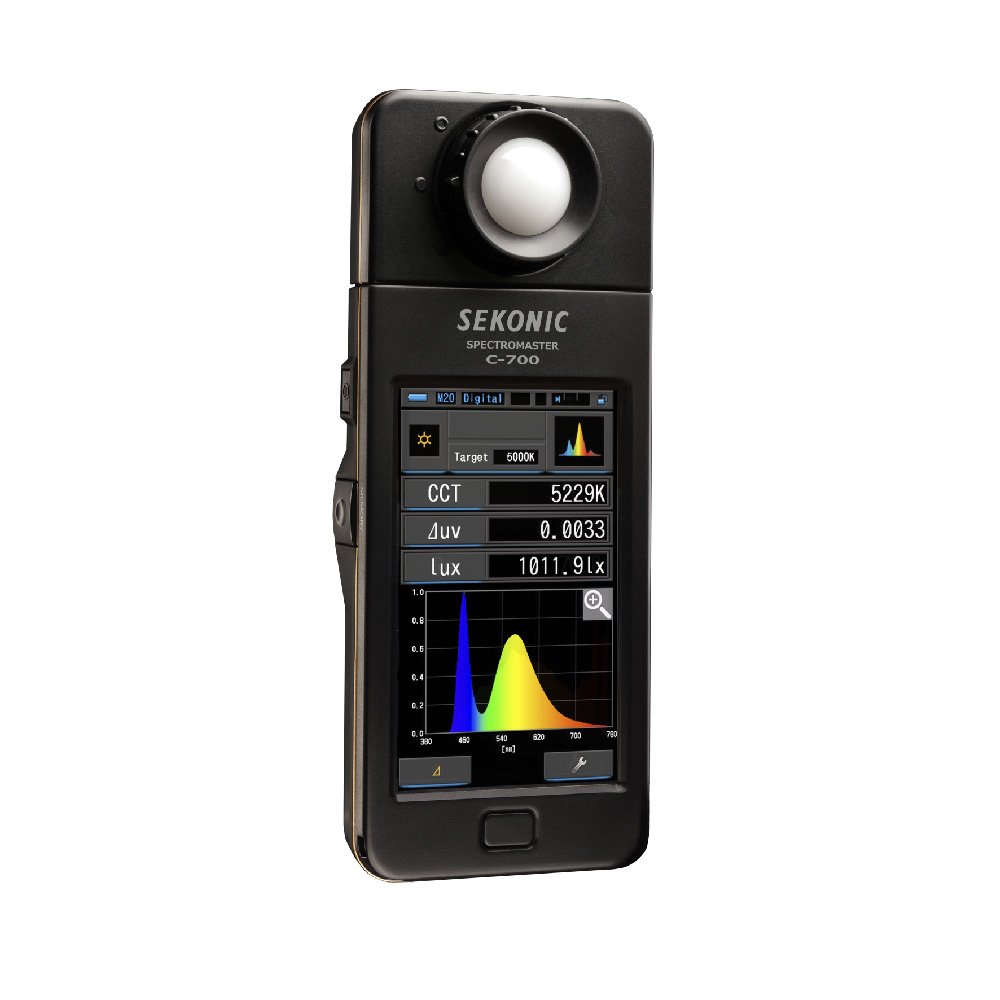Hi, James,
So how do you measure color Doug? Color perception is closely connected to the wavelength of light .
The mechanics may be performed in different ways, but the ideal underlying process is always this:
First we determine (perhaps with a spectrophotometer) the
power spectral density (PSD) of the light whose color we wish to measure. That is a curve (often called just "the spectrum" of the light) that shows how the power in the light is distributed by wavelength. We can think of it (slightly imprecisely) as a plot of how much power there is in each of the myriad components of the light at its respective wavelength.
Next we multiply that curve by a standardized curve (also a function of wavelength) called the
X matching function curve. The shape of that curve is defined by the CIE.
By "multiplying one curve by another" I mean that at each wavelength we take the value of the PSD and the value of the matching function curve, multiply them together, and plot the result on another curve (also having wavelength as its horizontal axis). After we have done that for every wavelength in the visual range, we have a third curve.
We now integrate that curve (essentially, determine the area under it). That gives us the value "X".
Now we do that same thing using a second standardized curve, the
Y matching function curve. The result is the value "Y".
Finally we do that same thing using a third standardized curve, the
Z matching function curve. The result is the value "Z".
The values "X", "Y", and "Z" describe the
color of the light, under the CIE "XYZ" color space.
************
Now I know you are uneasy with the notion of an "objective" characterization of what we know is a wholly subjective property. Let me try and reconcile those things.
Suppose we have two light beams with different PSDs but the same color (same X, Y, Z values). We would then find that a human observer would perceive each of these light beams as having the same color, but perhaps not quite. The reason it is "perhaps not quite" is of course that the color perception mechanism behaves slightly differently in different humans.
But if we did such a test over a large number of human subjects, we would find that, on the average, the subjects would perceive the two light beams as being "exactly the same color" when their XYZ values were the same.
Thus we can reasonably think of the XYZ values of a light beam as being an objective metric of its color.
In fact, these three "matching function curves" were determined by the CIE to bring that situation about. This was done by, in the early 1930s, conducting in effect the inverse of the experiment I describe above with a large number of human subjects. Then, by a very clever mathematical scheme, the three matching curves were devised so that the XYZ measure of a light's color was consistent,
on the average, with the color perception of this group of human subjects.
So, is color a property that is defined as a matter of human perception? Absolutely.
And are we able, in an objective way, with instruments and mathematical manipulation, to determine an objective "metric" (in three numerical values) of what
should be that human perception of color for a given instance of light for the hypothetical "average human observer".
I hope that helps.
Best regards,
Doug


